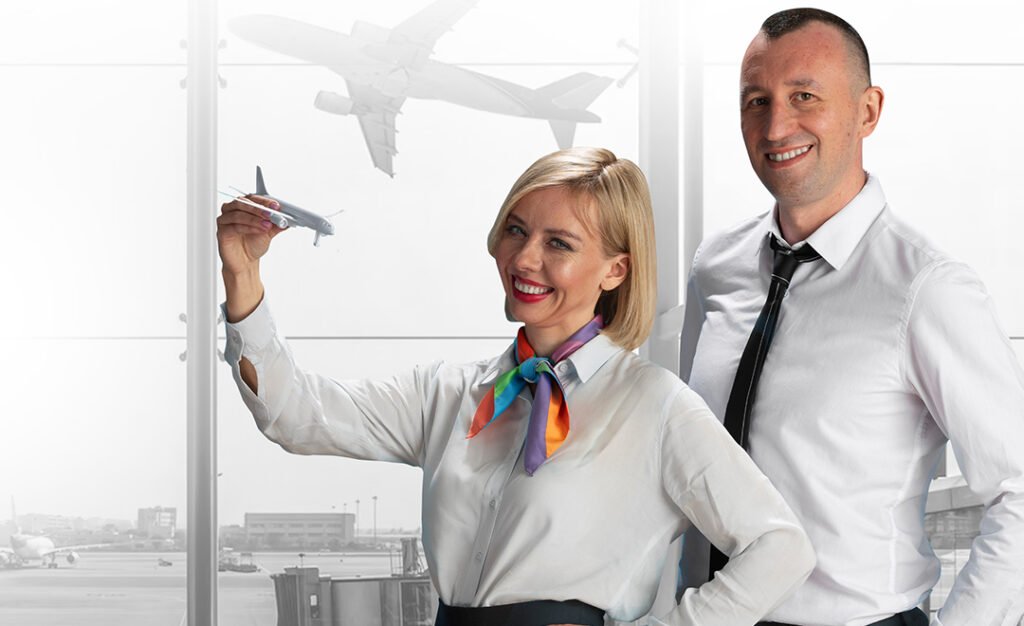Sustainable CTO: Transforming the Future of Aviation Industry
The aviation industry is opening doors to new economic opportunities, connecting people from all over the world, providing transportation, and much more! The aviation industry is connecting and bringing people together. But the industry also emits large carbon footprints and harms the environment. The recent climatic changes are raising concerns for society. The industry has become a huge sector within a few decades due to its increasing demand. Chief Technology Officers are stepping up sustainable approaches as the global pressure rises.
The Role of CTOs in Aerospace Sustainability
Usually, technological advancements are within the organizations, but now CTOs have to think more sustainably while driving technological innovations. CTOs in the aerospace industry have to initiate several steps toward sustainability. The developments involve next-gen aircraft, enhanced air traffic, and seeking alternative fuels. However, sustainability is not about a single company but the industry as a whole. Hence, collaboration is essential.
Around 882 million metric tons of carbon dioxide (CO2) were generated from air transportation in 2023. Carbon dioxide emissions by the aviation industry are around 2.05%.
In 2021, during an international airshow, Chief Technology Executives from seven companies- Airbus, GE, Boeing, Rolls Royce, and more, came together to discuss the efforts to be put in for the reduction of emissions. Reaching the level of net zero in aviation would require technological innovation as well as collaboration among industry leaders and government. This is the goal for each organization present in the meeting.
The Air Transport Action Group (ATAG) has set a target to reduce CO2 emissions by half by 2050. The Air Transport Action Group (ATAG) has also taken the initiative to restrict the increase in CO2 emissions by 2020. The CTOs of the world’s seven leading aviation manufacturers are working to meet this goal through necessary commitments.
Collaborative Efforts
When it comes to sustainability, the aviation industry is a bit complex. The challenge lies in transitioning from the use of fossil fuels to alternative sustainable fuels while maintaining the efficiency of aircraft. Therefore, it is important for industry leaders to collaborate and share expertise to innovate and reach the goal.
To address this complex goal, the CTOs have recognized the importance of collaboration. From aviation giants to startups, different companies are coming together to find sustainable solutions. Collaborations can take various forms, including joint ventures, industry partnerships, governmental initiatives, and collaborations between research institutes.
CTOs are coming together to work on creating a cost-effective process and ensuring sustainable aviation fuels are available in larger quantities, reducing the reliability of fossil fuels. Sustainable fuel for aviation can reduce the carbon footprint by up to 80% in comparison to jet fuel. This fuel infrastructure will be established as big companies are collaborating with fuel suppliers and government bodies to bring it into use.
CTOs are also planning to focus more on the development of hybrid and hybrid-electric propulsion systems. To build electric aircraft that have the potential to reduce carbon emissions drastically, the battery has to perform significantly. The hurdle remains the battery technology, which is currently not sufficient for long-haul flights. Joint efforts will enable the development of more systems for electric propulsion that can be operated in short regional flights.
Overcoming Barriers
One of the primary challenges to reaching the sustainable goal is the cost that is associated with developing aviation technologies. A massive investment is required to attain and transition to greener technologies for many aviation companies. Hence, the collaboration of multiple companies is required. CTOs have the ability to pool financial resources and utilize these investments to develop unique technologies that will contribute to a brighter future. Partnering with the government can also accelerate the adoption of greener technologies.
Standardizing policies and setting global sustainability standards can also reinforce the technology’s ability to scale. CTOs in aerospace are working on the implementation of such standards with the regulatory bodies globally. These efforts aim to maximize their impact.
Looking Toward the Future
The efforts that the aerospace CTOs are putting in today will yield fruitful results in the future. Change does not happen overnight; it takes time. Through collaboration and innovation, the aviation industry is stepping toward a sustainable future. By reducing CO2 emissions and creating sustainable aviation fuel, CTOs are taking this industry to the next level of innovation. CTOs are collaborating with government bodies to reinforce global sustainability standards. To reach the sustainable goal, industrial leaders of the aviation industry should come together.
- Manish Dave: Named One of India’s 10 Leading Real Estate & Construction Leaders in India 2025 By Corporate TrendZ
- Gokul G K: Named One of India’s 10 Leading Real Estate & Construction Leaders in India 2025 By Corporate TrendZ
- Bhilwara Energy Limited Appoints Basant Jain as Joint MD & CEO
- Ashwani Vohra steps in as Managing Director at Elior India
- Jio Financial Services appoints Venkata Peri as COO
- SalarySe appoints Indranil Guha as Vice President of Marketing
- Ritwick Udayan Appointed Executive Director at Deloitte
- DS Patil: Named One of India’s 10 Leading Real Estate & Construction Leaders in India 2025 By Corporate TrendZ












